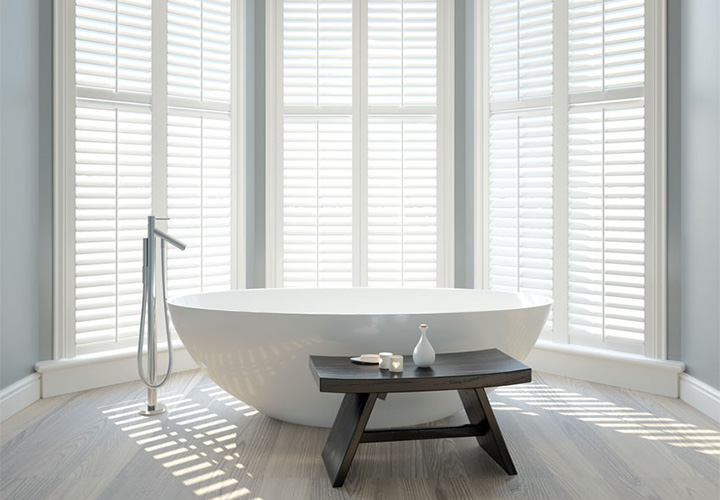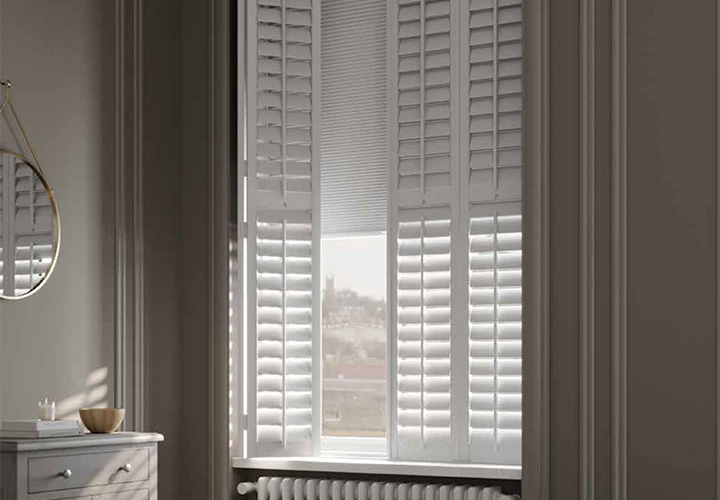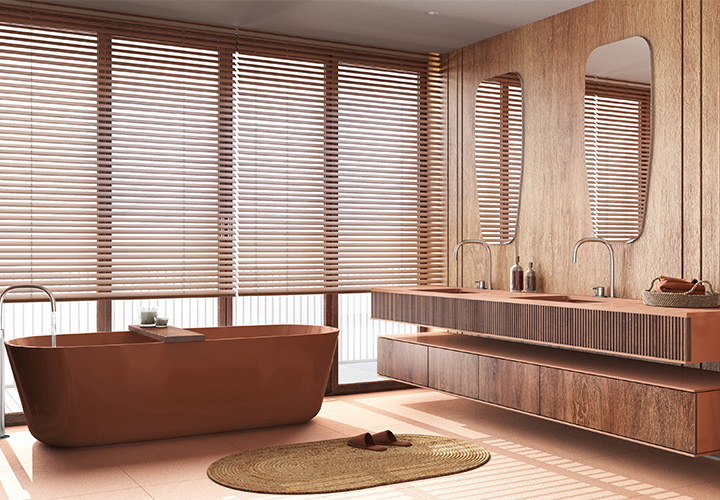Dive into our guide on the timeless debate between shutters and blinds for your windows. At The Shade Studio, we emphasise choosing window coverings that offer both beauty and function. This guide compares shutters and blinds, helping you make an informed decision. Blinds come in Vertical, Venetian, Pleated, and Roller types, while shutters offer Full Height, Tier-on-Tier, Café, Solid, and Tracked styles. Both manage light and privacy expertly. However, consider the aesthetic appeal and durability differences. Shutters are durable, lasting decades, while blinds might need replacing after five years.

The initial factor in your decision-making should be the dimensions and form of your windows, as this could significantly influence whether blinds or shutters are more suitable. For those with uniquely shaped windows - think arches or angles - shutters might be the ideal choice due to their ability to be custom-fitted to any specific configuration. In contrast, standard rectangular windows lend themselves well to blinds, offering a straightforward yet effective solution. Our expert installation teams have extensive experience fitting both shutters and blinds to a wide variety of window shapes, ensuring a perfect match every time.

Another factor to bear in mind is the frequency with which the window is opened, particularly for transom windows. The concern isn't solely the ease of opening the window; it's also about ventilation preferences. If you enjoy the breeze from an open window, the choice of blind becomes crucial. For instance, fabric blinds may flutter with the wind, suggesting the need for an option like a Duette® blind that integrates seamlessly with the window during opening. Conversely, if maintaining an unobstructed window area for easy operation is preferable, then opting for Café style window shutters would be wise.

In contrast to the welcoming daylight a kitchen might enjoy, a south-facing study can suffer from excessive glare on screens, a situation well-addressed by the use of shutters. Their adjustable louvres provide unparalleled light control. Furthermore, these rooms have a tendency to accumulate heat, particularly during the summer months or in glass-heavy spaces like conservatories, making window treatments like pleated blinds with a solar reflective coating an essential consideration. For wet areas like kitchens and bathrooms, the functionality and ease of cleaning offered by faux wood vinyl shutters and faux wood blinds make them a preferable choice over any textile-based coverings.

For those seeking the utmost darkness, opting for solid shutters is highly recommended. These shutters excel in dimming your room by fully obscuring any external illumination when shut. Conversely, various blinds, including blackout and Duette blinds with fabrics designed to darken rooms, are capable of moderating light, though they might not achieve the same total blackout effect as shutters. An alternative worth considering is the innovative Shutter & Shade setup from The Shade Studio, ingeniously engineered to maximise darkness. This design incorporates a discreet pleated blind behind the shutter section, reinforced with a sturdy double insert 'F' frame to deliver superior light exclusion in your environment.

If your residence is situated near a busy street or pathway, you may require a solution that addresses several issues simultaneously, including ensuring privacy, dampening noise, and enhancing the exterior appearance. Wooden shutters are particularly adept in this scenario, though it's worth noting that the effectiveness varies among shutter styles; for instance, full-height shutters outperform café-style shutters in meeting these needs. However, blinds should not be overlooked entirely in this context - wooden blinds can match the privacy offered by louvre shutters, and top-down bottom-up Plissé blinds can be configured to cover specific window sections in a café-style approach. Additionally, Duette® blinds are available in dual-tone fabrics, which feature white on the exterior side to achieve a consistent external aesthetic.

The importance of a consistently comfortable home through every season cannot be overstated. Utilising Shutters as a key insulating strategy effectively moderates indoor climates by shielding against the intense heat of summer and the harsh cold of winter. This enhances the overall comfort of your living areas while also significantly lowering energy expenses. Alternatively, Duette® and Sonnette™ shades stand out for their fusion of beauty and innovative engineering, boasting unique honeycomb and cellular designs that trap air for superior thermal insulation. This guarantees your home stays warm, cuts down on energy use, and with the addition of PowerView Automation®, brings unparalleled convenience.

Ensuring the safety of children and pets is a critical aspect of choosing the right window coverings such as blinds and shutters. These options are designed with safety in mind. For instance, contemporary shutters often come with a cordless design to prevent entanglement risks for both kids and furry friends. Users can adjust these shutters easily with a tilt rod or by hand without the need for cords. Similarly, blinds are also moving towards cordless models to address safety concerns, offering a safer alternative to the traditional corded systems. Smart Blinds present a further advancement in safety. With no cords needed, they can be controlled remotely or set to adjust automatically, significantly minimising the chances of accidents.

Ultimately, when determining whether to dress your windows with interior shutters or blinds, your individual taste becomes the decisive factor. If the warmth and natural beauty of wood in either stained or painted form appeals to you, then shutters or wooden blinds will likely be your choice. On the contrary, if you're drawn to the softer appearances of fabric, fabric blinds will appeal to you more. You also have the flexibility to choose whether to pursue a homogeneous design throughout your home or to inject variety into each room, highlighting its unique features. While multiple elements may influence your decision, the key is to ensure your habitats align with your personal preferences.
Your email address will not be published. Required fields are marked *